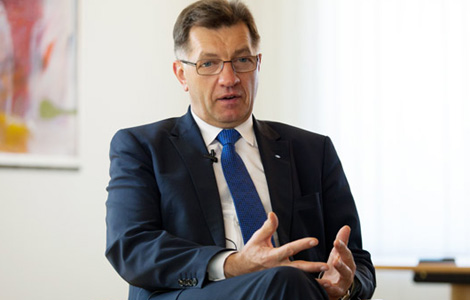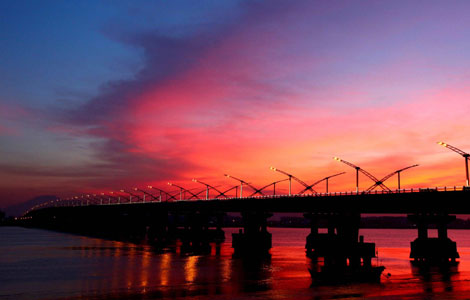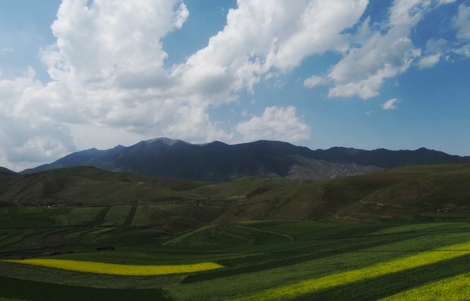Water diversion faces pollution control challenge
Updated: 2013-07-27 13:09
(Xinhua)
|
||||||||
Meanwhile, the overuse of fertilizers in agriculture was also a factor behind the pollution, Zuo said.
The problem, if unsolved in the coming year, could pose a threat to the quality of water in the Danjiangkou reservoir, the engineer warned.
"The task is arduous and urgent," said Zhou Ji, the Communist Party chief of Shiyan. "We hope the general public, particularly the beneficiaries in the northern areas, will take note of our challenges."
In a bid to ensure clean water, Shiyan has shut down 329 factories in recent years, which resulted in a decline in fiscal revenues by 800 million yuan per year.
Meanwhile, it has increased annual spending on environmental protection to 1.5 billion yuan. But the relatively under-developed city finds it impossible to bear all the cost.
"A compensation mechanism should be established so that the northern regions can help to fund the environmental protection and to improve the the livelihood of 180,000 relocated villagers," said Zhou.
The south-to-north water diversion project, first envisioned by China's late chairman Mao Zedong, was designed to consist of eastern, central and western routes, with an estimated overall cost of 500 billion yuan ($81 billion) and a construction period of 40 to 50 years.
The project aims to transfer 44.8 billion cubic meters of water annually from the country's water-rich south, mainly the Yangtze River reaches, to quench the water shortage in the north.
Construction of the eastern and central routes began in December 2002 and December 2003 respectively, and water diverted via the central route will mainly supply the Chinese capital, Beijing.

 Bolt wins 100m at London's Olympic Stadium
Bolt wins 100m at London's Olympic Stadium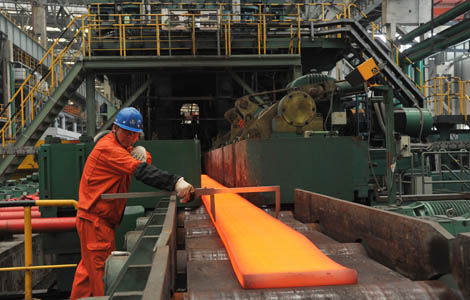
 19 industries to shed capacity
19 industries to shed capacity
 Choir sings its way into Chinese hearts
Choir sings its way into Chinese hearts
 Hot times for travel agents
Hot times for travel agents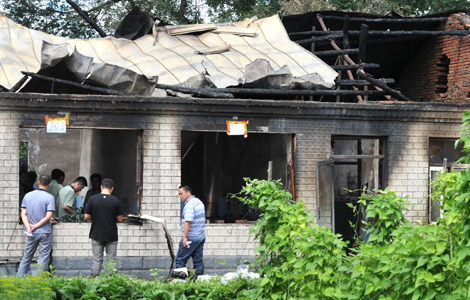
 Nursing home blaze kills 11 residents
Nursing home blaze kills 11 residents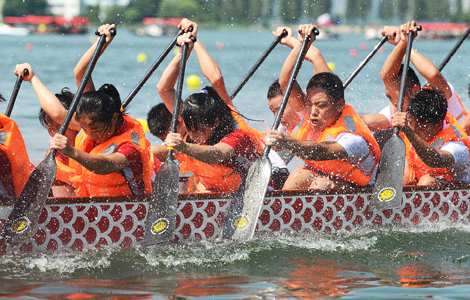
 Wuhan a prime spot for international rowing hub
Wuhan a prime spot for international rowing hub
 LeBron frenzy grips Guangzhou
LeBron frenzy grips Guangzhou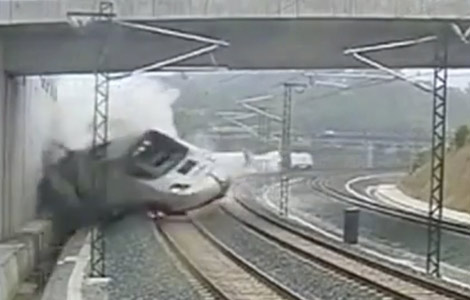
 Police to question driver for Spanish train crash
Police to question driver for Spanish train crash
Most Viewed
Editor's Picks

|

|

|

|

|

|
Today's Top News
DPRK holds military parade
Hot times for travel agents
CIC gets 10.6% yield for overseas assets
Arrival of China tigers put on hold
Deadly NE China fire an act of arson: police
Chinese developer buys LA site for $1b project
Snowden faces another 6 months in limbo: official
Sovereign fund sees 10.6% return
US Weekly

|

|

